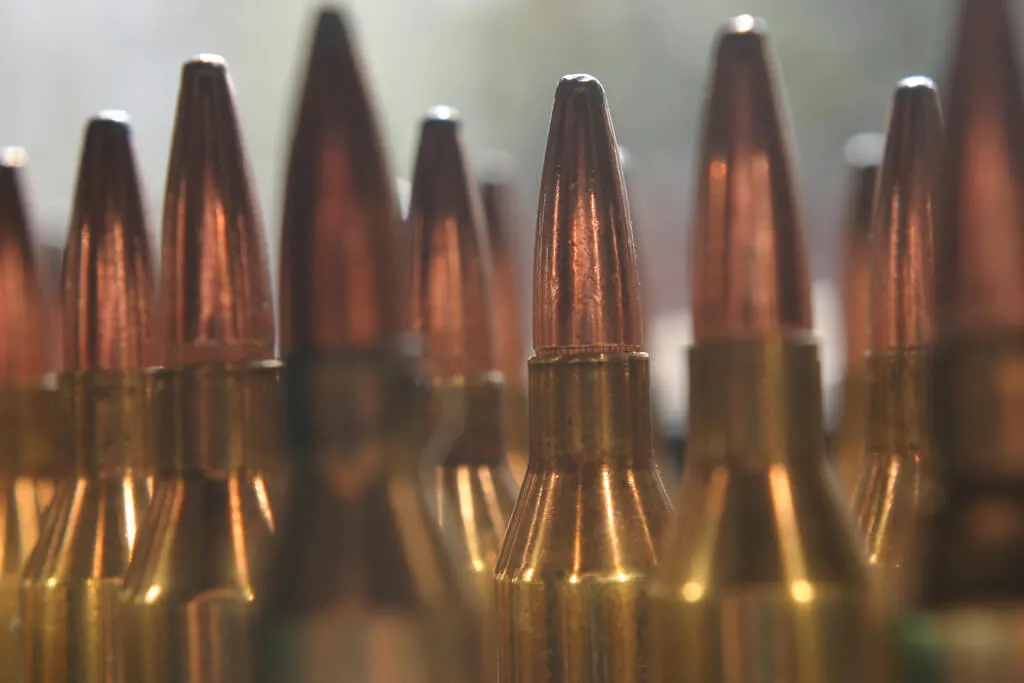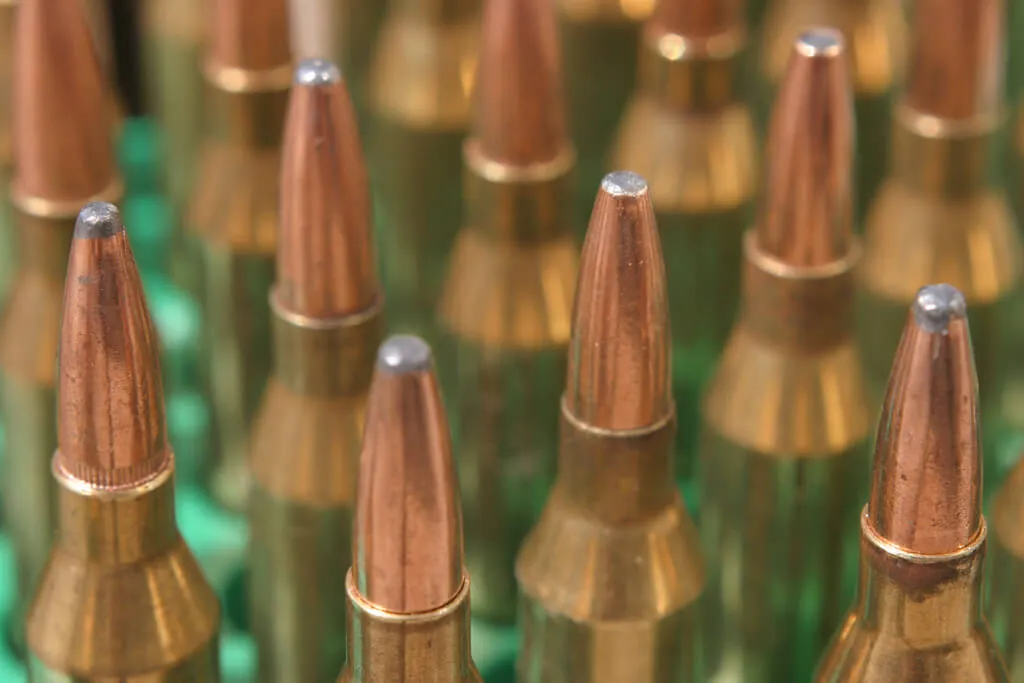Executive Summary
- In 2019, the USA spent $732 billion on military spending, which was larger than the combined military spending of the ten largest military spenders in the world, including China, Russia, and India.
- The individual comparison suggests that the USA spent 3 times more than China and 11 times more than Russia.
- The US has remained engaged in big and small wars in 230 out of the 245 years since 1776. Put in other words, until this day, the US has known just 15 years of peace.
- In 2013, the US special operations command (SOCOM) had special operation forces (SOFs) in 134 countries.
- The war on terror, which started after September 11, is now virtually global, with US anti-terrorist actions in 80 nations on six continents.
- Since September 11, the US spent $6.4 trillion on its War on Terror.
- The average yearly military spending of the USA from 1960-2020 was over $572 billion.
- Other nations between 1960-2020 did not significantly increase military spending, including Germany, Japan and Russia.
- China is the exception, which started deviating to higher spending in the mid-1990s.
- The Army, Navy and Air Force receive 30%, 30% and 26% budgets respectively.
- Russia has had higher military spending in terms of GDP than the US since 2014.
- Under the New START regime, the US will have to spend minimum $230 billion to manage Russia's nuclear threat.
- The next generation of military spending - the arms race in outer space?

Introduction
President George Washington said in the First State of the Union Address in 1790 that “To be prepared for war is one of the most effectual means of preserving peace.”
One implication of the American founding father’s assertion is that war, peace, and military spending are closely linked. Military expenditure of a country may reflect multiple realities such as the extent of security challenges it faces, its resolve to maintain the balance of power, and its resistance to any real or perceived challenge to the status quo.
At the same time, military expenditure may also reflect the required deterrence level and exercise of hegemony in international relations.
In 2019, the USA spent US$ 732 billion, which was larger than the combined military spending of the ten largest military spenders of the world after the US, including China, Russia, and India.
SIPRI Military Expenditure Database
The US military spending has crucial implications for the patterns of military spending worldwide and, by implication, has a significant bearing on global peace and security.

Trends in Expenditure on Overseas Missions/Wars
The Extent of American Military Engagement Overseas
The United States has been engaged in overseas missions and wars for the best part of its history.
According to one estimate, the US has remained engaged in big and small wars in 230 out of 245 years since 1776. Put in other words, until this day, the US has known just 15 years of peace.
Article Only 15 Years of Peace In The History of the United States of America
However, the technical definition of war creates some problems in quantifying the extent of American engagement overseas. If some event has to qualify as war because Congress counts it as a war, then there has been no war in the US since 1942. The reason is that Congress has not declared any war since 1942. But the term ‘war’ has been unreservedly used for a wide range of situations, including “counterterrorism operations.” President George Bush declared war on “terror” in the wake of 9/11. President Obama’s administration declared “war” on ISIL, as the latter posed a terrorist threat. President Obama’s war was an extension of the ongoing “war” on Al Qaeda and its affiliates.
Relaxing the technical and operational definitions of war, we come to an unmistakable conclusion is that the US is militarily engaged in the majority of countries in the world today. In 2013, the US special operations command (SOCOM) had special operation forces (SOFs) in 134 countries, where they were involved either in combat or were in special missions or advised and trained foreign forces.
Contrary to popular belief that American engagement has been winding down over time, American missions overseas have been swelling.
Sniper Country Research Team
Previously, SOFs were deployed in about 60 countries of the world in the last days of Bush’s presidency, which reached 75 in 2010. In 2017, which corresponded with the first year of Donald Trump in office, US Special Operations forces, including Navy SEALs and Army Green Berets, were deployed to 149 countries worldwide.
A longer-term view of the American military engagement offers some more interesting insights. The objective of some of the American engagements overseas has been well known, such as the war on terror (in Afghanistan), pre-empting a potential use of weapons of mass destruction (in Iraq), and resisting the expansion of the communist bloc (in Vietnam). However, at times the US has used alternative issues to justify declaring war on sovereign countries.
As an illustration, the US made partisan electoral interventions in other countries for as much as 81 times from 1946 to 2000. Put differently, the US made armed interventions in 11.3% of all elections held during this period.
The war on terror, which started after September 11, is now virtually global, with US anti-terrorist actions in 80 nations on six continents. The infographic based on Brown University’s Cost of War Project reveals the nature of American engagement overseas.

The Cost of War
Given the level of American military engagement in different parts of the world for various reasons, it should only be expected that America spends quite a lot on its military engagements.
According to the recent estimates published by the Cost of War Project, the US spent US$ 6.4 trillion on its War on Terror since 2001.
Brown University Cost of War Project
Such massive investment in the war on terror has implications for the well-being of the American people because every investment has alternative uses, such as fighting pandemics and providing adequate housing and education.
The cost of war on terror overseas and the domestic counterterror mobilization is largely paid for by deficit spending. Even if the United States withdraws entirely from the major war zones and halts its global war on terror operations now, the total budgetary burden of the post-9/11 wars will continue to rise.
The cost of war may continue to increase because the US pays a high interest rate on the funds raised through deficit financing and the rising cost of veterans’ healthcare. Moreover, the Pentagon base budget increases associated with the wars are likely to remain intact, inflating the military budget over the long run.
Before the ongoing war on terror, America fought two other major wars in the recent past entailing high cost. According to Naval History and Heritage Command sources, Americans spent around US$ 739 billion (Constant 2019*) in a decade-long Vietnam war, starting in 1965 and ending in 1975.

*Constant 2019. The cost was transformed to Constant 2019 rates using CPI for All Urban Consumers: All Items in U.S. City Average)
Similarly, America spent around US$ 115 billion (Constant 2019) in the Persian Gulf War in 1990-1991. It may be noted that these costs are for military operations only and do not include the cost of veteran benefits, interest paid for borrowing money to finance the war, or assistance to allies.

Military Expenditure: Long-Run Trends from 1960-2021
Even if aggregating the information on military expenditure proves helpful in various contexts, zooming in on various components of military expenditure provides further insights for policy review.
The federal budget’s National Defense function comprises:
- Department of Defense (DoD) military activities
- Atomic Energy Defense Activities
- Defense-related activities of other federal agencies.
National defense outlays for major public direct physical capital investment are disaggregated into two major components: military spending, and spending on atomic energy and other defense systems.
The significant share of investment from 1960 to 2021 went to the:
- Military (US $8.13 trillion)
- Atomic Energy and other Defense (US $255 billion)
The military component consisted of procurement (US$ 7.5 trillion), military construction (US$ 521 billion), and family housing (US$ 67 billion).
The atomic energy and other defense component consisted of Construction and Rehabilitation of Physical Assets (US$ 78 billion) and major equipment (US$ 176 billion).
The direct investment in major public physical capital (tax dollars on physical defense infrastructure) from 1960 to 2021 totaled a staggering US$ 8.38 trillion at constant 2018 prices.
Sniper Country Research Team
Regarding individual years, military construction and procurement show spikes corresponding with the Vietnam war (1967), Persian Gulf war (1990), renewed thrust on the war on terror around 2010, and a sustained increase in the last five years because of an increased level of engagement against ISIL and Taliban.

Comparison of US Military-Spending with Other Major Economies
In 2019, US military expenditure was higher than ten close competitors combined.
U.S. Defense Spending Compared to Other Countries 2019 - Peter G. Peterson Foundation
In 2019, US military spending totaled US$ 731.8 billion, whereas the combined budget of ten other countries immediately below the US in terms of military spending was US$ 725.7 billion.
The individual comparison suggests that the US spent nearly three times higher than China, 11 times higher than Russia, 15 times higher than France, Germany, and the UK, and 48 times higher than Japan, the latter of which was the third-largest economy of the world in terms of nominal GDP.
- 3 times higher than China.
- 11 times higher than Russia.
- 15 times higher than France, Germany, and the UK
- 48 times higher than Japan.

Different metrics can be used to compare US military spending with other countries, such as per capita military spending and military spending as the share of GDP, with each giving a different type of insight. In absolute terms, US military spending has remained unrivaled in recent history.
With average yearly military spending of over US$ 572 billion from 1960-2020, the US spent over five times higher than China and nearly 13 times higher than Russia. While the US military spending increased on average, other major powers such as Germany, Japan, and Russia did not significantly increase their military expenditure during 1960-2020.
The only exception was China, which started deviating around the mid-1990s from the long-run path of relatively low-level military spending.

The per capita military expenditure also suggests a similar pattern.
With an average per capita military expenditure of US$1642 in current prices from 1960-2020, the US spent five times higher than Russia and 27 times higher China in this period.

While US military spending as a share of its GDP has been historically higher than China, Germany, and Japan, a notable exception is Russia which has made larger military spending in terms of GDP share than the US since 2014. With an average expenditure of 5.47% of GDP from 1960-2020, the US spent 2.8 times higher than China’s.

The Expenditure of Military Budget on Firearms and Other Weapons
Though it may be of immense public interest to see the price tag of each firearm at the disposal of the US, the publicly available information is sketchy. It is, at times, intentionally blurred for strategic reasons. And quite justifiably so. One reason is that the arms manufacturing sector may have a highly customized cost structure for its buyers (which may be competing nations at the same time). Given the limited publicly available information on military expenditure by weapon system, Congressional Budget Office (CBO) data gives vital insights into firearms and other weapon systems.
CBO calculates the operating costs for every unit in the US armed forces. The operating costs are, strictly speaking, Operation and Support (O&S) cost for every unit. The O&S costs include direct personnel costs and costs that are directly associated with a major combat unit. They also include indirect personnel costs and the costs associated with units that support the major combat unit. Overhead personnel costs and costs associated with major combat unit’s share of administrative or overhead activities also become part of O&S costs. The values given in the figure below are based on DoD’s fiscal year 2019 budget submission.
The O&S costs make up about two-thirds of DoD’s “base” budget—the budget excluding separate appropriations provided to fund ongoing military operations. The other one-third of that base budget is spent mainly on acquiring weapon systems and on military construction and family housing. O&S costs are very closely related to the size of units—for instance, a unit with 10,000 military personnel will have military personnel costs commensurate with that size.
Defense Wise O&S Costs
The Army receives a significant share of O&S costs (33%), followed by the navy (30%), air force (26%), and other defense-wide expenditures (11%).

Air Force O&S Costs
Over 40% of the O&S costs are accounted for by
- KC-135 Tanker Aircraft Squadron (10%)
- F-35 Fighter Aircraft Squadron (10%)
- F-16 Fighter Aircraft Squadron (9%)
- F-15 Fighter Aircraft (8%)
- C-130 Cargo Aircraft Squadron (7%)
- Rest of the Air Force (12%)

- Active Marine Infantry Battalion (16%)
- Aircraft Carrier (13%)
- Active Marine Air Component (12%)
- Arleigh Burke Class Destroyer DDG-51 (9%)
- Amphibious Ship (9%).

Army O&S Costs
Combat teams of three brigades account for around 66% of total Army O&S cost.
- Combat Teams of Active Infantry Brigade (27%)
- Armored Brigade (24%)
- Stryker Brigade (15%)

What May Lie Ahead?

The bilateral relationships between China and the US nosedived under Trump’s administration and are very likely to receive further setbacks under Biden’s administration. Similarly, Russia-U.S. relationships have also touched new depths following tough questions about the Russian role in US presidential elections and US concerns about the human rights record of Russia. These developments have crucial implications for US military spending.
Covid-19 initially strained the US-China relationship and the final year of Donald Trump’s term in office marked a near-complete breakdown of diplomatic relations between both countries. However, contrary to all high expectations about the normalization of the bilateral relations, the recent Alaska Summit could not have taken a more inauspicious start, with both sides expressing deep skepticism about others.
At the end of the talks, US Secretary of State Antony Blinken talked about “deep concerns” the Biden administration had with some Chinese actions. If the relationships between two economic heavyweights do not significantly improve, US military spending may significantly increase.
Multiple spa shootings in Atlanta on March 26, which claimed the lives of six Asian women, are seen as the manifestation of growing racial “animus” against Asian Americans. This may further strain the bilateral relationships between the US and China, thus further stoking the arms race between the two countries and increased military spending by the US.
Complex US-Russian Relations and New START

In 1975, Paul Warnke published an article, “Apes on a Treadmill.” He criticized the high cost of the US-USSR nuclear arms race and the danger of nuclear conflagration. However, the two countries took steps to limit the risk of nuclear conflict by limiting the number of strategic weapons each country can have.
Capping a series of treaties, both the countries came up with the New Strategic Arms Reductions Treaty (New START) in 2010. According to the terms of New START, each country could deploy an equal number of strategic nuclear warheads and weapons carrying system, and a strict system of verification of the compliance with the terms of the treaty.
The START places limits on the number of deployed strategic nuclear warheads. Both countries can deploy up to a maximum of 1550 nuclear warheads and 800 missile launchers and bombers, out of which 700 may be deployed at any given time.
The bilateral relationship between the US and Russia saw new lows when the US intelligence community claimed proof of the Russian meddling in the 2020 US election, and President Biden’s suggestion in an interview that Putin was a “killer.”
All this while, many waited with bated breath for the fate of New START, which was about to expire in February 2021, and what it could portend for a potential new nuclear arms race between the US and Russia. Interestingly, with only two days remaining until its expiration, the United States and Russia officially extended the 2010 New Strategic Arms Reduction Treaty (New START) for five years.
Congressional Budget Office developed a range of scenarios of the costs that the US may have to incur to increase its strategic nuclear stockpile to the levels consistent with the limits under different arms control treaties.
Under the New START regime, even the most conservative low-cost approach may cost the US more than US$ 230 billion to manage Russia’s nuclear threat. More flexible approaches may cost more than US$ 400 billion.
Sniper Country Research Team

But things are far from settled despite the renewal of New START. The new front is outer space, and China has joined the US and Russia in another expensive arms race in outer space.
The security environment in space today has become dangerously unstable as the US, Russia, and China develop and test “new iterations of space weaponry in their mirror-image pursuit of space control policies.”
The UN General Assembly in December 2020 expressed the desire that member states “reach a common understanding of how best to act to reduce threats to space systems to maintain outer space as a peaceful, safe, stable and sustainable environment.”

Given the current atmosphere of mistrust between the US, Russia, and China, all indicators suggest a substantial increase in US military spending on conventional, nuclear, and space weapon systems.














